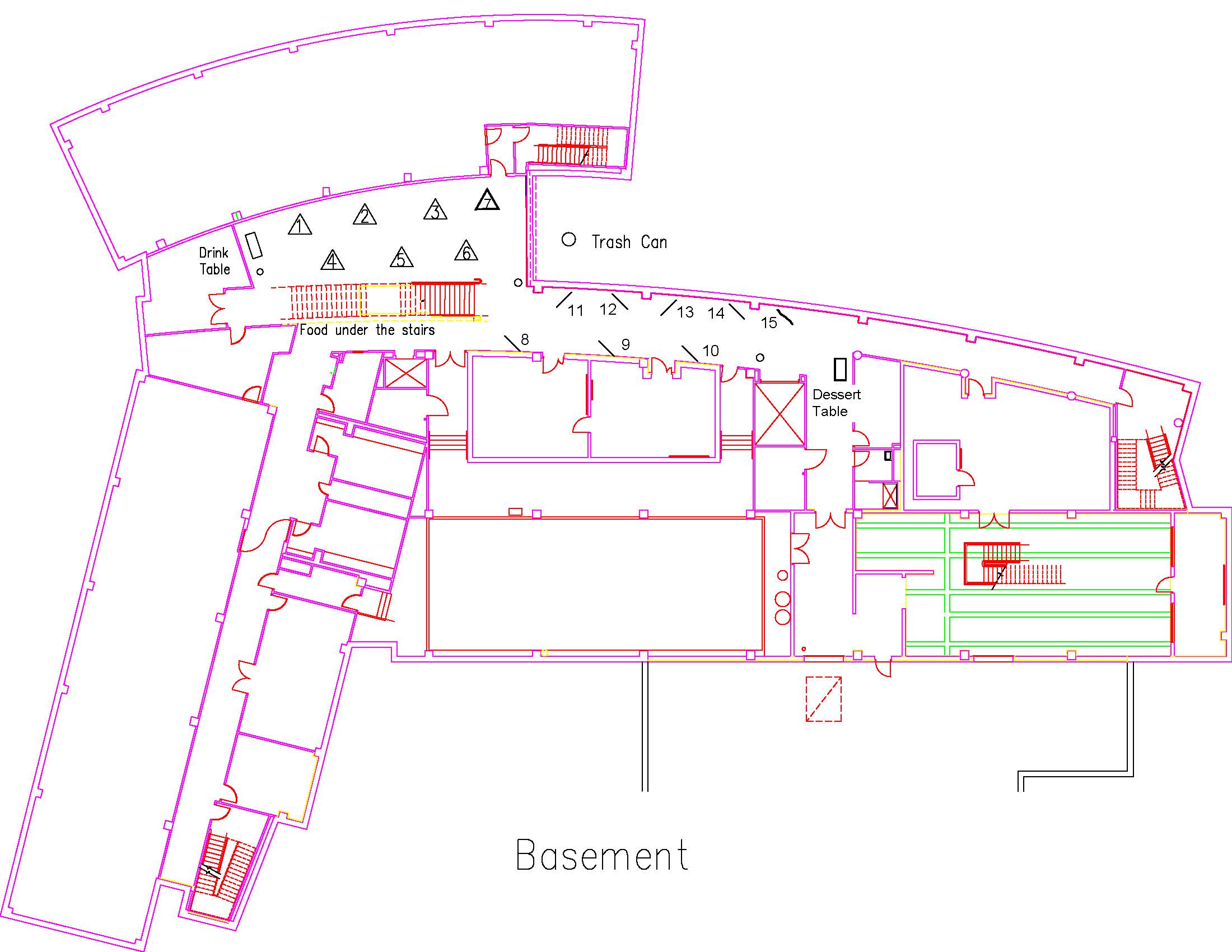CHEM2019CLARK13102 CHEM
Synthesis of Pancratistatin and similar analogs
Type: Undergraduate
Author(s):
Brian Clark
Chemistry & Biochemistry
Advisor(s):
David Minter
Chemistry & Biochemistry
Location: Session: 1; 1st Floor; Table Number: 6

View PresentationPancratistatin is a natural alkaloid that can be isolated from the bulbs of Hymenocallis littoralis, which is a tropical plant commonly referred to as the Spider Lily. Pancratistatin has been shown to have potent cytotoxic anti-tumor activity in biological testing, meaning that it could be a key component for designing natural anti-cancer drugs. The key structural component responsible for the cytotoxic activity of Pancratistatin is the phenanthridone ring system. Pancratistatin has also been proven to combat RNA-containing flaviviruses such as Yellow Fever, Zika, and West Nile Virus. Previously reported procedures for synthesizing Pancratistatin have been reasonably successful, but they all involve the use of lengthy sequences that produce low yields in order to reach the desired product. The purpose of this research project is to provide a more efficient synthesis by increasing the final yield and decreasing the number of steps required. Through successfully synthesizing Pancratistatin, several different analogs of the molecule that contain the phenanthridone ring will also be obtained.
CHEM2019EBER15332 CHEM
Synthesis of 1,1’-Dideaza-Quinine: A Proof of Concept
Type: Undergraduate
Author(s):
Jackson Eber
Chemistry & Biochemistry
David Minter
Chemistry & Biochemistry
Adam Montoya
Chemistry & Biochemistry
Advisor(s):
David Minter
Chemistry & Biochemistry
Location: Session: 1; 3rd Floor; Table Number: 3

View PresentationQuinine is a naturally occurring alkaloid found in the bark of the cinchona tree.1 Its medicinal relevance cannot be overstated as it is one of the most widely used anti-malarial drugs in the world.1 While the synthetic pathway to derive quinine is of limited relevance due to its abundance and ease of extraction, the puzzle of engineering reactions to isolate a stereochemically pure product of quinine captivated chemists for generations. The purpose of this study was to prove the conceptual route proposed by Stotter, Friedman, and Minter2 for the stereochemically pure total synthesis of quinine via a non-nitrogenous analog where the two nitrogen atoms of quinine are substituted with carbon atoms. The product of the analogous route is 1,1’-Dideaza-Quinine. Quinine is stereochemically complex, containing four separate stereocenters, thus the synthesis of quinine opens up the possibility of generating sixteen different isomeric structures.3 While the total synthesis of quinine with the correct stereochemistry was accomplished in 2001,3 the proposed route simplifies the process by relying on a stereospecific aldol condensation to eliminate potential isomerization.2 The results of the study validate the proposed route and add to the field of Organic Synthesis by illustrating an example of a stereoselective aldol condensation. Additionally, due to the analogous nature of the synthetic route utilized, many novel compounds were generated adding to the body of knowledge available to the Chemistry community.
CHEM2019HENDERSON2011 CHEM
Chemical hardness and orbital overlap in substituted aromatics
Type: Undergraduate
Author(s):
Nicholas Henderson
Chemistry & Biochemistry
Arshad Mehmood
Chemistry & Biochemistry
Advisor(s):
Benjamin Janesko
Chemistry & Biochemistry
Location: Session: 2; Basement; Table Number: 5

View PresentationHard-soft acid base theory is often used to explain the selectivity of chemical reactions, under the assumption that hard (soft) nucleophiles prefer to react with hard (soft) electrophiles. Computationally, quantifying the relative hardness and softness of different sites in a molecule remains challenging. Our "orbital overlap distance function" allows us to quantify which regions in a molecule contain compact vs. diffuse molecular orbitals. Here we explore the idea that compact molecular orbitals correspond to chemically hard regions, and that diffuse and polarizable orbitals correspond to chemically soft regions. We combine the orbital overlap distance with electrostatic potentials to quantify the hardness and electrophilicity of different sites in heterocyclic aromatic compounds. Results are compared to known experimental trends in aromatic reactivity
CHEM2019NEWELL46942 CHEM
Preparation of Clickable Monomers Compatible with Automated PNA Synthesis
Type: Undergraduate
Author(s):
Grace Newell
Chemistry & Biochemistry
Advisor(s):
Jean-Luc Montchamp
Chemistry & Biochemistry
Location: Session: 2; Basement; Table Number: 1

View PresentationPeptide nucleic acids (PNA) are artificially synthesized monomers or polymers that mimic DNA or RNA sequences. Due to their stability in biological conditions and their ability to bind complementary to DNA or RNA, PNAs have potential medicinal value since they can be used to block processes like replication or protein synthesis. Though most PNAs are commercially synthesized, the goal of this project was to begin the synthesis with propargyl bromide. This would allow the final monomer to have a propargyl group which allows functional groups (like a polyamine tail, fluorescent tag, or alkylating group) to be added at the end or any time throughout the synthesis. The PNA monomer will be made with all four DNA bases (thymine, cytosine, adenine, and guanidine) attached. Another importance of this PNA monomer is its ability to undergo click reactions to create a PNA oligomer. Click chemistry is a chemical reaction that uses copper-catalyzed coupling to combine an azide with an alkyne. The ability to use click chemistry is vital since it can be done in biological conditions, has an excellent yield with few byproducts, and is relatively quick to perform. In conclusion, this project is useful since these PNA sequences can be used to modulate processes and treat a variety of diseases while having the ability to add functional groups to track the PNA oligomer.
CHEM2019NIEBUHR27253 CHEM
Functional Modifications and Electronic Influences on Macrocyclic Tetra-aza Copper (II) Complexes
Type: Undergraduate
Author(s):
Brian Niebuhr
Chemistry & Biochemistry
Marianne Burnett
Chemistry & Biochemistry
Advisor(s):
Kayla Green
Chemistry & Biochemistry
Location: Session: 2; Basement; Table Number: 2

View PresentationA library of novel pyridinophane tetra-aza macrocyclic molecules derived from 1,4,7,10-tetraaza-2,6-pyridinophane (pyclen) capable of chelating biologically relevant metal ions have been synthesized. Applications of these types of molecules currently being pursued are 1) therapeutic, focusing on radical scavenging and metal chelation and 2) diagnostic, focusing on magnetic resonance imaging (MRI) contrast agents when complexed with specific metal ions. Despite wide interest in these molecules, a full study of the electronic effects imparted by substitution to the pyridyl moiety and the subsequent impact on the metal center has not yet been conducted. The objective of the present study is to characterize metal complexes of four, new tetra-aza macrocyclic metal chelating molecules. The pyridyl functional groups studied include: A) unmodified pyridyl (L1), B) 14-hydroxyl (L2), C) 14-nitrile (L3), and D) 14--nitro (L4) modified pyclen structures. Procedures for metal ion chelation with copper (II) ion, followed by characterization and analysis of the electronic environments of each are presented.